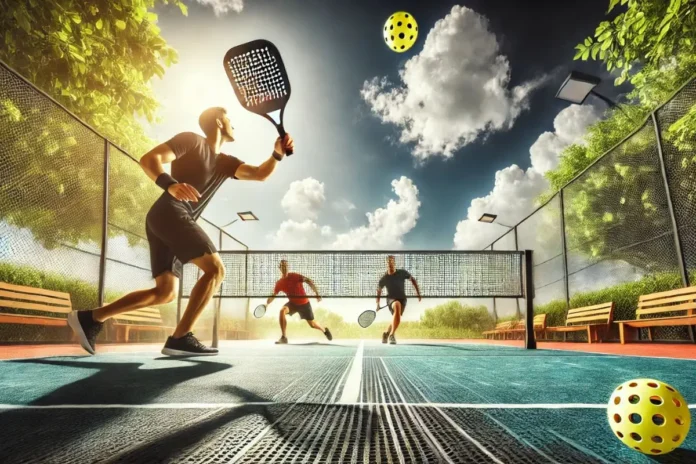Pickleball’s Rise to the Top: Pickleball is the fastest-growing sport in the world, attracting millions with its fun, accessibility, and strong sense of community. However, it faces challenges from the tennis community, which has attempted to undermine pickleball’s legitimacy while also trying to claim it as their own.
A Unique Sport with Distinct Roots
Pickleball was created in 1965 on Bainbridge Island, Washington, by Joel Pritchard, Bill Bell, and Barney McCallum. They aimed to design a game their families could enjoy together. Using a badminton court, wooden paddles, and a perforated plastic ball, they crafted a sport that is easy to learn and inclusive for all ages.
The name “Pickleball” has a charming origin. Some believe it was named after the Pritchards’ dog, Pickles, who loved chasing the ball. Others think it refers to the “pickle boat” in the crew, where leftover oarsmen are grouped. This playful history reflects the sport’s community-driven spirit.
Pickleball has since gained popularity, becoming a favorite in retirement communities, parks, and recreation centers. It is not forced upon people; rather, it brings joy, connection, and a sense of belonging. Today, there are nearly 14 million players in the U.S. alone, and the sport is rapidly growing worldwide.
Tennis Community’s Mixed Reactions
As pickleball gained popularity, the tennis community reacted with ridicule and envy. Initially dismissing pickleball as “not a real sport,” tennis players later described it as a “clone of tennis” and insisted it would never stand on its own. Now, with more pickleball courts than tennis courts in some areas, tennis players are eager to claim ownership of the sport.
Different Philosophies: Pickleball vs. Tennis
At their core, pickleball and tennis represent different philosophies. Tennis is often viewed as a “gentleman’s war,” focused on individual competition and power. In contrast, pickleball encourages collaboration and camaraderie. The smaller court, underhand serve, and kitchen rules promote longer rallies and strategic play, prioritizing fun over ferocity.
Tennis is associated with elitism due to its expensive equipment and country club origins. Pickleball breaks down these barriers with affordable paddles, simple rules, and courts that require less space. It is accessible to everyone, regardless of age or skill level.
In tennis, players aim to overpower opponents, while pickleball emphasizes skill and strategy. The non-volley zone allows for engaging rallies, where players are encouraged to give opponents a chance to return the ball.
Why Pickleball Stands Alone
Pickleball’s success is rooted in its unique spirit. It prioritizes connection over competition and fun over fame. Although tennis players may have skills transferable to pickleball, they do not own its essence. The attempts by the tennis community to claim pickleball as their own disrespect the millions of players who cherish it as a distinct and joyful experience.
The ongoing tension between the two sports underscores pickleball’s rising popularity. As more players embrace its community-oriented nature, the sport is likely to continue thriving, attracting diverse participants and fostering connections among players of all backgrounds.
News in Brief: Pickleball’s Rise to the Top
Pickleball, the fastest-growing sport globally, faces challenges from the tennis community, which has tried to undermine its legitimacy. Created in 1965, pickleball is celebrated for its accessibility and community spirit. With nearly 14 million players in the U.S., the sport continues to thrive and grow worldwide.
ALSO READ: The Rise of Pickleball: Why Millions Are Embracing the Fast-Growing Sport

